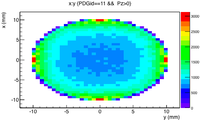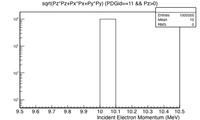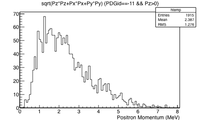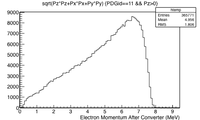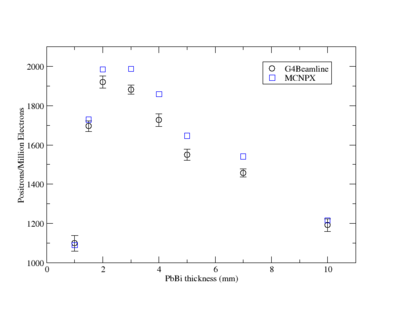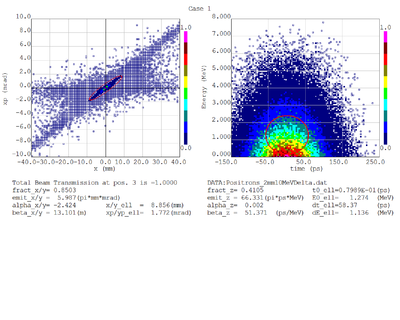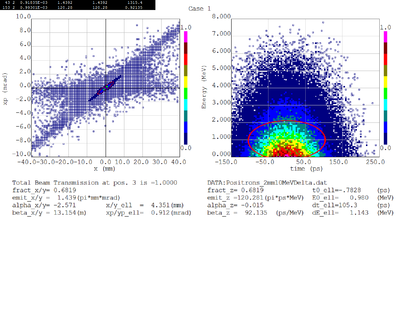Niowave 10-2015
Niowave Positron Project Progress for October 2015
A comparison was made between MCNPX and GEANT4 using a cylindrical electron beam with a radius of 1 cm. The 10 MeV incident electrons impinged a 2 mm thick PbBi target. Positrons escape the surface of the PbBi target with a mean momentum of 2.3 MeV. The positron production efficiency predictions from MCNPX and GEANT4 are within uncertainties.
Incident Electron spatial distribution and energy
Positron and Electron Momentum after the converter
Text files were delivered to Niowave so Niowave could begin designing a beamline to transport the positrons using a solenoid immediately downstream of the PbBi target. Dmitry, from Niowave, used the test files to calculate the beam transport properties of the positrons escaping the PbBi target.
Dmitry's processing of Tony's GEANT simulations showing transverse phase space portrait (left) and longitudinal phase space portrait (right). Phase space portraits show coordinate x or y vs diveregense=px/pz or py/pz (or time vs kinetic energy ). Captions show:
1. geometric (not normalized) emittance for transverse and emittance for longitudinal phase space portraits (ellipse areas divided by "pi")
2. Twiss parameters
3. Ellipse centroid for longitudinal phase portrait
4. sqrt(beta*emittance) and sqrt(gamma*emittance) - half sizes of the projections of the ellipses on the coordinate and divergence axes respectively.
Positrons - RMS
Positrons - 68.2% core
